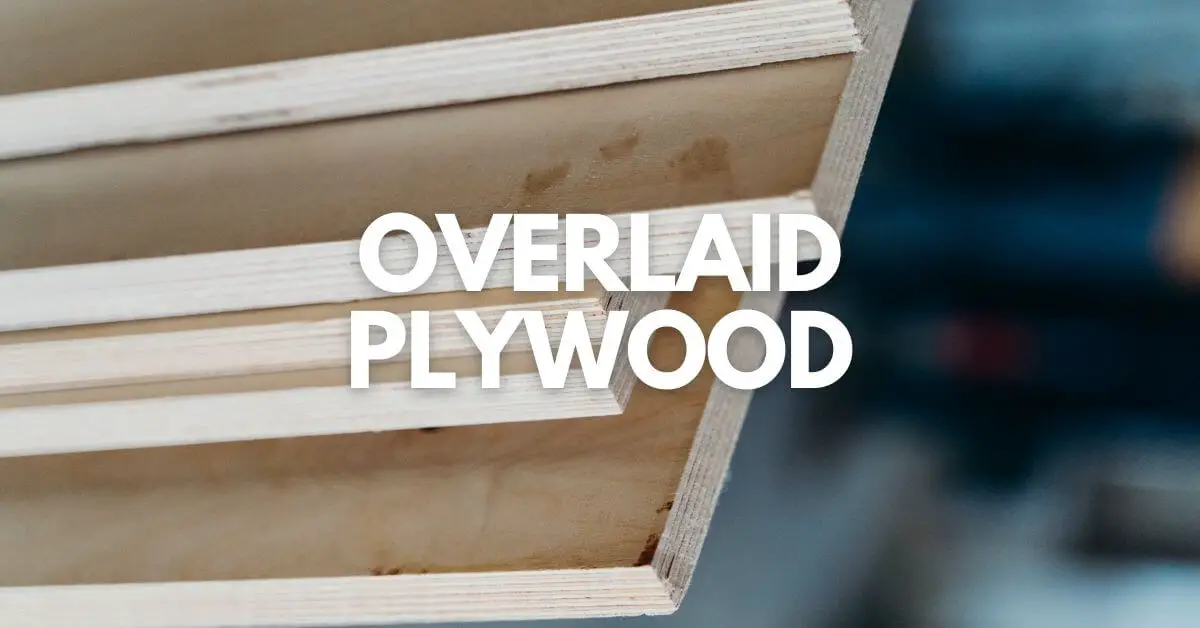What is Overlaid Plywood?
Overlaid plywood is a durable, stable, and weather-resistant material, primarily used for outdoor applications. One or both sides of the overlaid plywood are coated with thermosetting resin to make the surface smooth, scratch-resistant, and moisture-resistant.
Overlaid plywood is made by gluing multiple thin veneer sheets together with moisture-resistant glue under heat and pressure.
Types of Overlaid Plywood
There are mainly types or grades of Overlaid plywood: HDO (High-Density Overlay) and MDO (Medium Density Overlay).
HDO
A-grade or B-grade veneer is used for making the front face of HDO plywood while C-grade is for the core or inner layers. HDO plywood panels are available in many colors and thicknesses, you can choose according to your requirement.
There are two grades of HDO plywood: Concrete Form and Industrial. Concrete Form grades are manufactured with more than 52% phenolic resin content so that they acquire greater strength and become excellent moisture resistant.
MDO
MDO plywood is a weather-resistant, durable, and versatile material that can be used for outdoor and indoor applications. The front and back sides of MDO plywood are made of B-grade veneer while the inner ply is C-grade.
There are two grades of MDO plywood: Concrete Form and General.
HDO vs MDO Plywood
HDO plywood panels have more resin as compared to MDO plywood. So HDO plywood panels are more durable, and dimensionally stable than MDO plywood. Making HDO and MDO plywood has to go through the same process but the amount of resin used in making these grades varies.
Uses of Overlaid Plywood
Overlaid plywood is primarily used in concrete forming, exterior furniture, exterior siding, and agricultural industries or for all applications that are exposed to moisture and weather.
Overlaid Plywood is also used for interior purposes such as furniture, laundry rooms, bathroom, or kitchen platforms.
The surface is designed to withstand extreme weather conditions so it is commonly used to make painted signs.
Working with Overlaid Plywood
Overlaid plywood is easy to cut, drill and finish. For best results, you need to keep your tools sharp because their surfaces are coated with a high amount of resin which can cause problems.
Overlaid plywood is paintable. The paint seals the plywood, which increases its durability. Overlaid plywood weighs lighter than marine-grade plywood so it is easier to handle.
Advantages and Disadvantages of Overlaid Plywood
Advantages
- Overlaid plywood has a smooth surface so moisture and dust do not stick to the surface.
- Overlaid plywood does not require finishing, it can withstand prolonged exposure to moisture and weather without finishing.
- Overlaid plywood is much easier to clean and maintain than regular plywood.
Disadvantages
- Overlaid plywood is more expensive than regular plywood.
- Overlaid plywood is not flexible; it is very hard to bend and flex.
Overlaid plywood is made from which type of wood?
Both softwoods and hardwoods are used for overlaid plywood such as Douglas Fir, Ash, Or, Red Oak, Birch, Mahogany, Teak, Maple, etc.
Plywood is made in many grades, for “AA” grade plywood, superior quality lumber is chosen, which does not have knots and defects. Whereas lumber with knots and defects is used to make BC-grade plywood. BC grade plywood is used for doors and indoor furniture.
Is Overlaid Plywood Waterproof?
Overlaid Plywood plywood is made with extreme waterproof glue and coated with thermosetting resin which does not allow moisture to penetrate. It performs better than regular exterior plywood in moisture.
Overlaid Plywood is moisture and waterproof. It can withstand moisture for a long time. But marine plywood is slightly more water-resistant than overlaid plywood panels.


